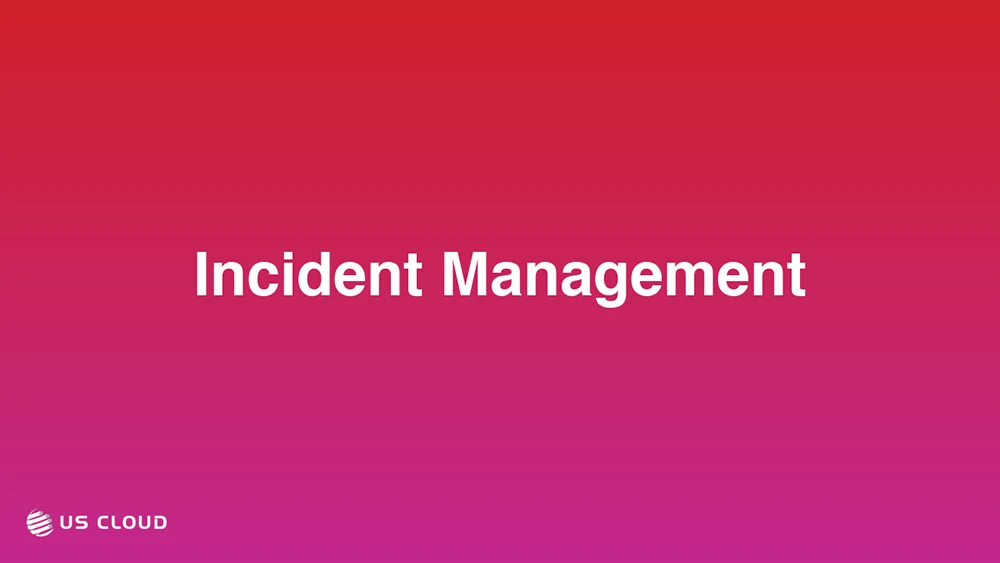Incident Management.

What is Incident Management?
Incident management is a systematic approach to handling unexpected disruptions or degradations in IT services. It encompasses a set of processes and procedures designed to detect, respond to, and resolve issues that impact the normal operation of IT systems and services. The primary goal of incident management is to restore service functionality as quickly as possible, minimizing downtime and reducing the negative impact on business operations.
Key aspects of incident management include:
- Rapid identification and logging of incidents
- Prioritization based on severity and business impact
- Efficient allocation of resources for resolution
- Clear communication channels between IT teams and stakeholders
- Continuous monitoring and updating of incident status
Incident management is a critical component of the Information Technology Infrastructure Library (ITIL) framework, which provides best practices for delivering IT services. By implementing a robust incident management process, organizations can improve their overall IT service quality, enhance user satisfaction, and maintain business continuity in the face of unexpected challenges.
The Incident Management Lifecycle
The incident management lifecycle consists of several interconnected stages, each playing a crucial role in the efficient resolution of IT service disruptions. Understanding these stages is essential for implementing an effective incident management strategy.
- Incident Detection and Recording: This initial stage involves identifying and documenting the occurrence of an incident. Detection can happen through various channels, including:
- Automated monitoring systems
- User reports via help desk or support channels
- IT staff observations
- Incident Classification and Initial Support: Once detected, incidents are categorized based on their nature and urgency. This classification helps in:
- Determining the appropriate response level
- Assigning the incident to the correct support team
- Establishing initial priority
- Investigation and Diagnosis: This stage involves a deeper analysis of the incident to identify its root cause. Activities may include:
- Gathering additional information from affected users
- Reviewing system logs and performance data
- Consulting knowledge bases for similar past incidents
- Resolution and Recovery: The focus here is on implementing a solution to restore normal service operation. This may involve:
- Applying temporary fixes or workarounds
- Implementing permanent solutions
- Coordinating with various IT teams for complex issues
- Incident Closure: The final stage ensures that the incident is properly resolved and documented. Key activities include:
- Confirming resolution with affected users
- Updating incident records with resolution details
- Identifying any lessons learned for future prevention
Key Components of Effective Incident Management
To ensure a smooth and efficient incident management process, several key components must be in place. These elements form the backbone of a robust incident management system and contribute significantly to its success.
- Incident Management Tool: A centralized platform for logging, tracking, and managing incidents is crucial. This tool should:
- Provide real-time visibility into incident status
- Facilitate collaboration among team members
- Offer reporting and analytics capabilities
- Well-Defined Escalation Procedures: Clear guidelines for when and how to escalate incidents ensure that complex or high-impact issues receive appropriate attention. Escalation procedures should:
- Define criteria for different escalation levels
- Specify roles and responsibilities in the escalation chain
- Include timeframes for escalation actions
- Knowledge Base: A comprehensive repository of known issues, solutions, and best practices can significantly speed up incident resolution. An effective knowledge base:
- Is easily searchable and regularly updated
- Includes step-by-step resolution guides
- Captures lessons learned from past incidents
- Communication Plan: Effective communication is vital during incident management. A solid communication plan should:
- Define channels for updates to stakeholders
- Establish protocols for emergency communications
- Include templates for various types of incident notifications
- Continuous Improvement Process: Regular review and refinement of incident management practices lead to ongoing enhancements. This process should involve:
- Analysis of incident trends and patterns
- Feedback collection from IT staff and end-users
- Implementation of preventive measures based on lessons learned
Measuring Incident Management Performance
To gauge the effectiveness of an incident management process and identify areas for improvement, organizations must track and analyze key performance indicators (KPIs). These metrics provide valuable insights into the efficiency and impact of incident management efforts.
Some essential KPIs for incident management include:
- Mean Time to Resolution (MTTR): This metric measures the average time taken to resolve incidents. A lower MTTR indicates more efficient incident handling.
- First Contact Resolution Rate: This KPI tracks the percentage of incidents resolved during the initial interaction with the support team. A higher rate suggests effective front-line support.
- Incident Volume: Monitoring the number of incidents over time can help identify trends and potential systemic issues.
- Customer Satisfaction: Gathering feedback from users affected by incidents provides insights into the perceived quality of incident management.
- SLA Compliance: Tracking adherence to Service Level Agreements helps ensure that incidents are being resolved within agreed-upon timeframes.
By regularly reviewing these metrics, organizations can:
- Identify bottlenecks in the incident management process
- Allocate resources more effectively
- Prioritize areas for improvement and training
It’s important to note that while these metrics are valuable, they should be considered in context and not viewed in isolation. A holistic approach to performance measurement, combining quantitative data with qualitative feedback, provides the most comprehensive view of incident management effectiveness.
Conclusion: The Future of Incident Management
As technology continues to evolve and businesses become increasingly dependent on IT services, the importance of effective incident management cannot be overstated. The future of incident management lies in leveraging advanced technologies and adopting more proactive approaches to service disruptions.
Artificial intelligence and machine learning are poised to play a significant role in enhancing incident management processes. These technologies can:
- Predict potential incidents before they occur
- Automate initial triage and categorization of incidents
- Suggest resolution steps based on historical data
Additionally, the integration of incident management with other IT service management processes, such as problem management and change management, will lead to more holistic and effective IT service delivery. This integration will enable organizations to:
- Address root causes more effectively, reducing recurring incidents
- Anticipate the impact of changes on service stability
- Continuously improve overall IT service quality
By embracing these advancements and maintaining a commitment to continuous improvement, organizations can ensure that their incident management processes remain effective in the face of evolving technological landscapes and business demands. The result will be more resilient IT services, improved user satisfaction, and ultimately, stronger business performance.
